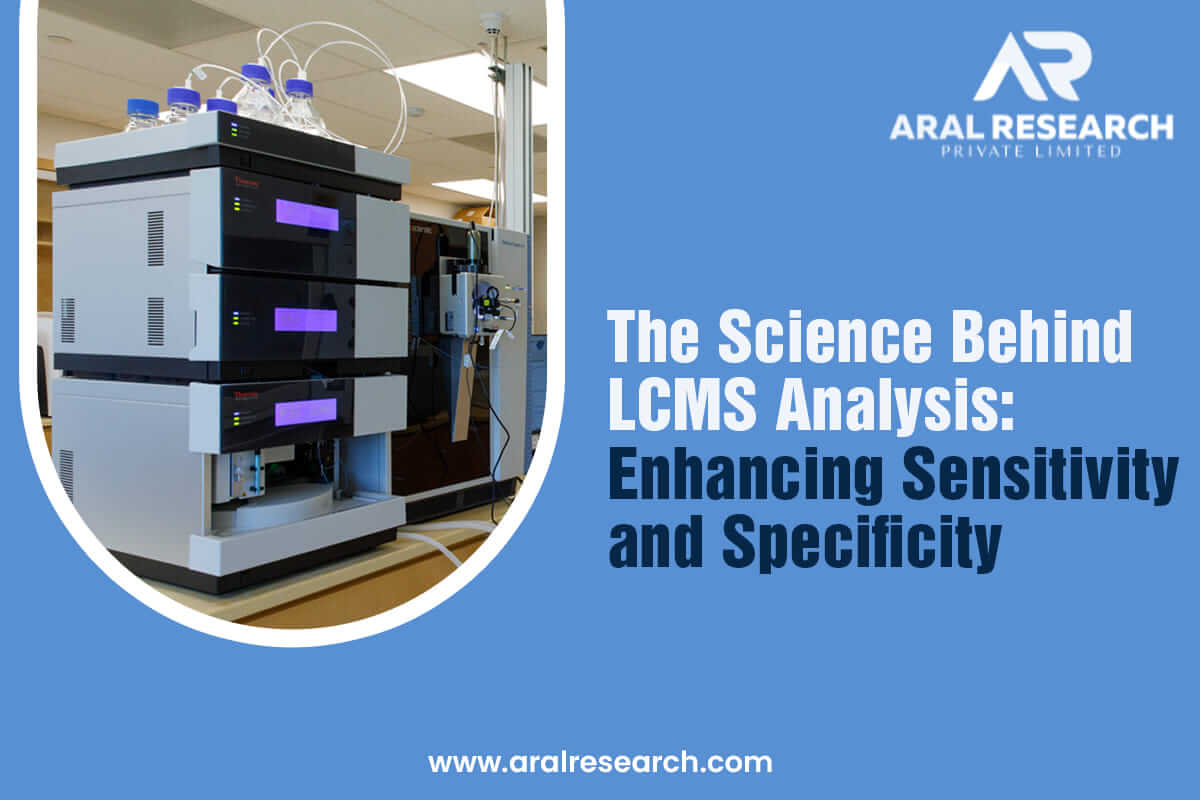
The Science Behind LCMS Analysis: Enhancing Sensitivity and Specificity

Liquid chromatography with mass spectrometry (LCMS) is a simple yet efficient technique for measuring analytes in biological matrices with high sensitivity and specificity. It plays a pivotal role in biomedical research, pharmaceuticals, environmental testing, and biotechnology. This powerful technique integrates liquid chromatography’s physical separation capabilities with mass spectrometry analytical excellence. LCMS is used to analyze various types of compounds, organic molecules, and large biomolecules. In this blog, we understand the science behind LCMS analysis, shedding light on its significance in different research & life science fields.
Understanding Liquid Chromatography Mass Spectrometry (LCMS)
Liquid chromatography and mass spectrometry are powerful techniques for analyzing complex mixtures, offering enhanced sensitivity and specificity in analysis. The term ‘sensitivity’ in LCMS refers to a change in signal per unit change in concentration of an analyte. It describes how the LCMS instrument can detect the relationship between the concentration of an analyte and the signal given. The field of LCMS has seen significant advancements, with advanced techniques improving the capabilities of LCMS, providing enhanced sensitivity and accuracy. Aral Research offers LCMS analysis in Ahmedabad with hands-on experience in working with clients from different fields.
The Science Behind LCMS: How Does LCMS Analysis Work?
Liquid Chromatography Components:
- Mobile Phase: LC involves the physical separation of analytes in a sample of interest. A solvent carries the sample that is chosen based on the sample’s characteristics.
- Stationary Phase: The substances in the column interact with components of the sample, helping the separation.
- Flow Rates: The speed of the mobile phase travels via the column is important for controlling resolution time and resolution.
Mass Spectrometry Components:
- Ion Souce: The ion source is vital for mass spectrometry for the ionization of molecules before they enter the mass analyzer. This process transforms the neutral molecules into ions to make them amenable to MS spectrometry.
- Mass Analyzers: Different types of mass analyzers are available, providing different mass resolutions and accuracy capabilities. Quadrupole analyzers are used for routine analysis, while Time-of-Flight analyzers are used for high-resolution mass analysis.
- Detectors: They convert physical signals from the ions into electrical signals, which are processed to give valuable data. They are vital for quantification and identification of analyzed compounds.
Working Principle Of LCMS
In liquid chromatography, the sample is dissolved in a solvent or mobile phase that passes through a column packed with a stationary phase. The sample components interact with the stationary phase for separation. It is crucial to note that factors like flow rates, solvent composition, and the properties of the stationary phase impact the process.
After separation by liquid chromatography, the compounds enter mass spectrometry to be ionized via methods like Atmospheric Pressure Chemical Ionization (APCI) and Electrospray Ionization (ESI). The ions are detected and sorted according to their mass-to-charge ratio (m/z) for the identification and quantification of compounds, offering a detailed view of the sample.
The combination of LC and MS offers a powerful technique for analyzing complex mixtures, offering accuracy, high sensitivity, and specificity. Aral Research, a leader in the field, offers high-quality LCMS service in Ahmedabad backed with SQ detectors for high-quality data. Our LCMS has gained immense prominence in fields like pharmaceutical, biotechnology, chemical analysis, and nutraceuticals. To discuss your project research details, call us today and experience the quality service we provide.
Checkout Now:- Advancements in LCMS Technology: Transforming Pharmaceutical Analysis
